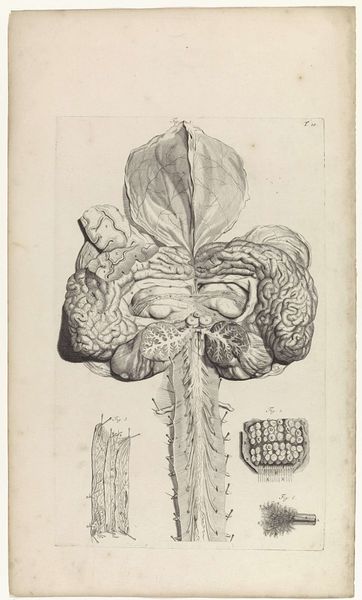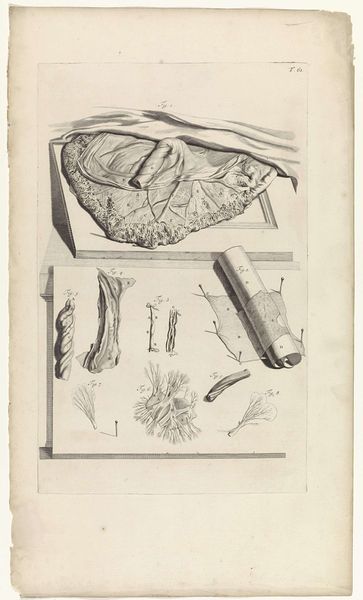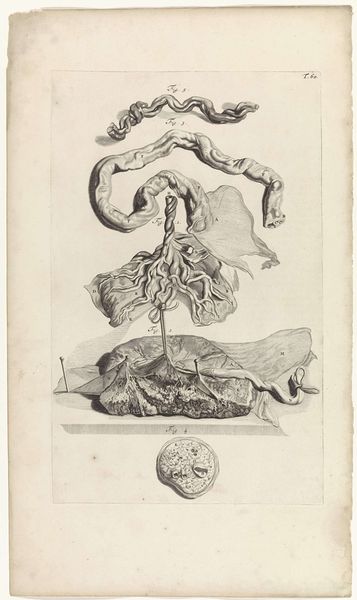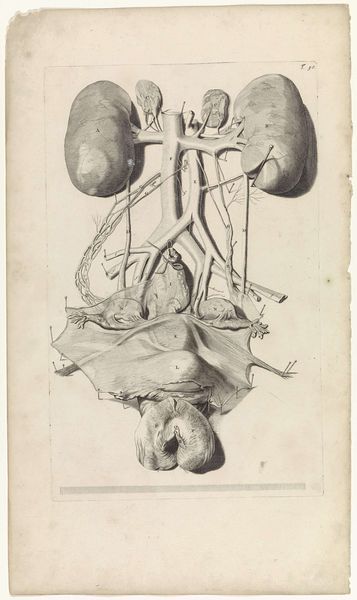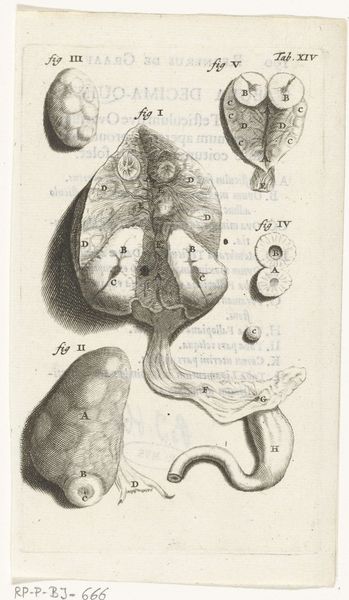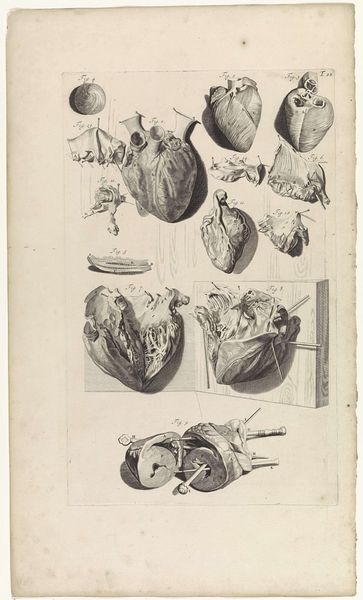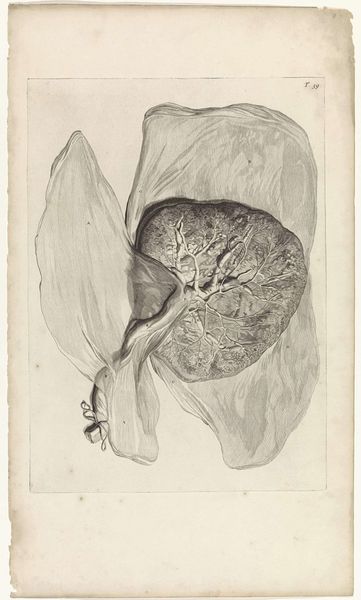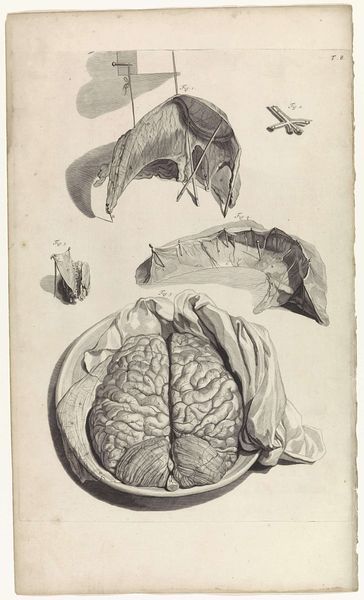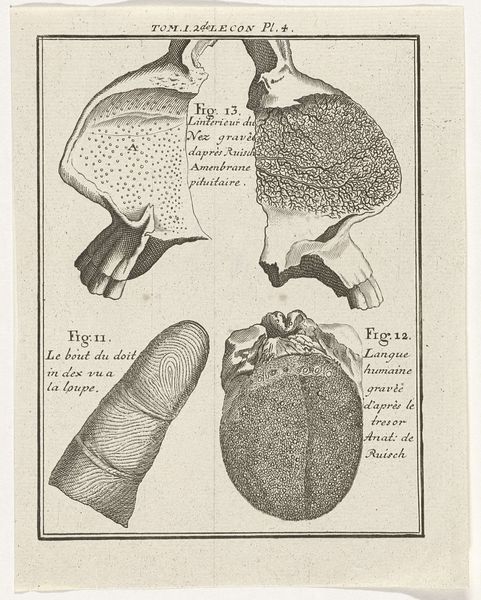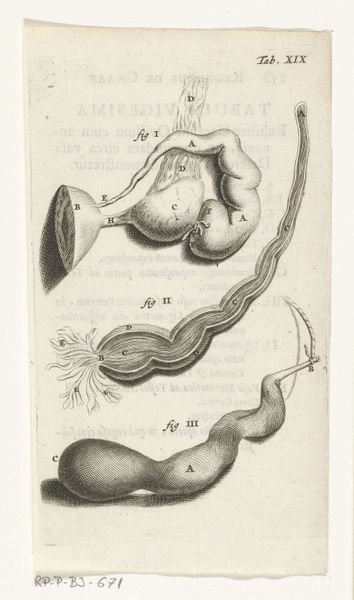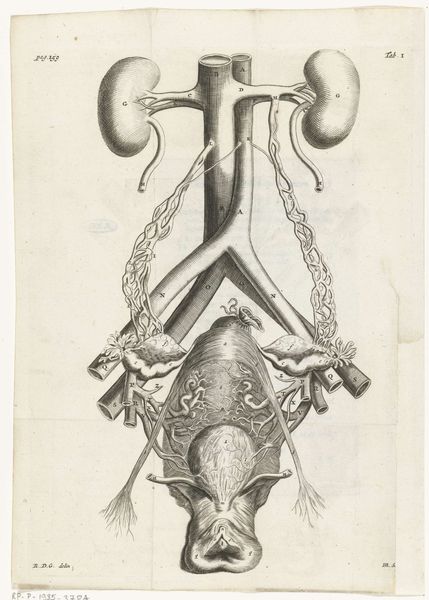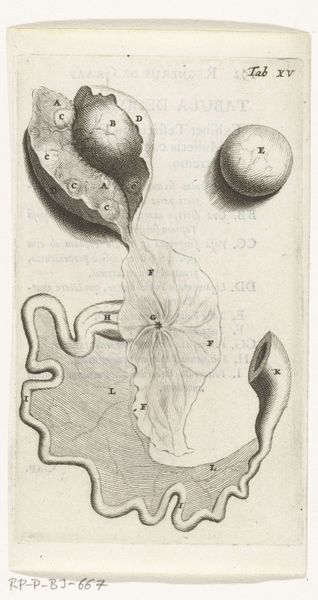
drawing, print, paper, ink, engraving
#
drawing
#
baroque
# print
#
old engraving style
#
figuration
#
paper
#
ink
#
pen-ink sketch
#
history-painting
#
engraving
#
realism
Dimensions: width 275 mm, height 440 mm
Copyright: Rijks Museum: Open Domain
Editor: Here we have Pieter van Gunst’s “Anatomische studie van de nieren,” or “Anatomical study of the kidneys,” from 1685, currently held in the Rijksmuseum. It’s a detailed engraving, and my first impression is one of starkness. What a contrast between the clinical precision of the lines and the intimate, almost vulnerable, nature of the subject. What do you make of it? Curator: Starkness is a great word! It reminds me of those old medical illustrations—the kind that both fascinate and slightly unsettle you. It’s science rendered as art, wouldn’t you agree? It's a product of its time, a Baroque dance between realism and a quest for knowledge. One has to ask oneself: isn't there a curious beauty in unveiling the hidden intricacies of the human body, presenting something so internal for external observation? Editor: Absolutely. It makes you think about the human body in a different way, as something to be studied but also marveled at. Does the method in which he has used realism, through a Baroque lens, serve to further objectify these kidneys? Curator: An excellent question, that hits directly at the heart of art, science, and perspective. It really depends on your reading. Do you see reverence, a testament to the incredible design? Or cold detachment, an objectification? It could easily be both. This sort of anatomical art really took off as a status symbol amongst institutions. But even from the artist’s rendering of them, you could easily assume a sense of awe toward their function, complexity, and existence. Editor: I can certainly appreciate the reverence within it. It's been fascinating to look at this piece with that perspective in mind. I can appreciate how Gunst used science and Baroque style hand-in-hand, and showed just how beautifully intimate our human form is. Curator: Exactly! So, in a way, it holds up a mirror – or rather, a lens – to our own perception, asking us to decide whether to approach the anatomical with a sense of macabre curiosity, cold dispassion, or perhaps something in between, steeped in a bit of awe.
Comments
No comments
Be the first to comment and join the conversation on the ultimate creative platform.
